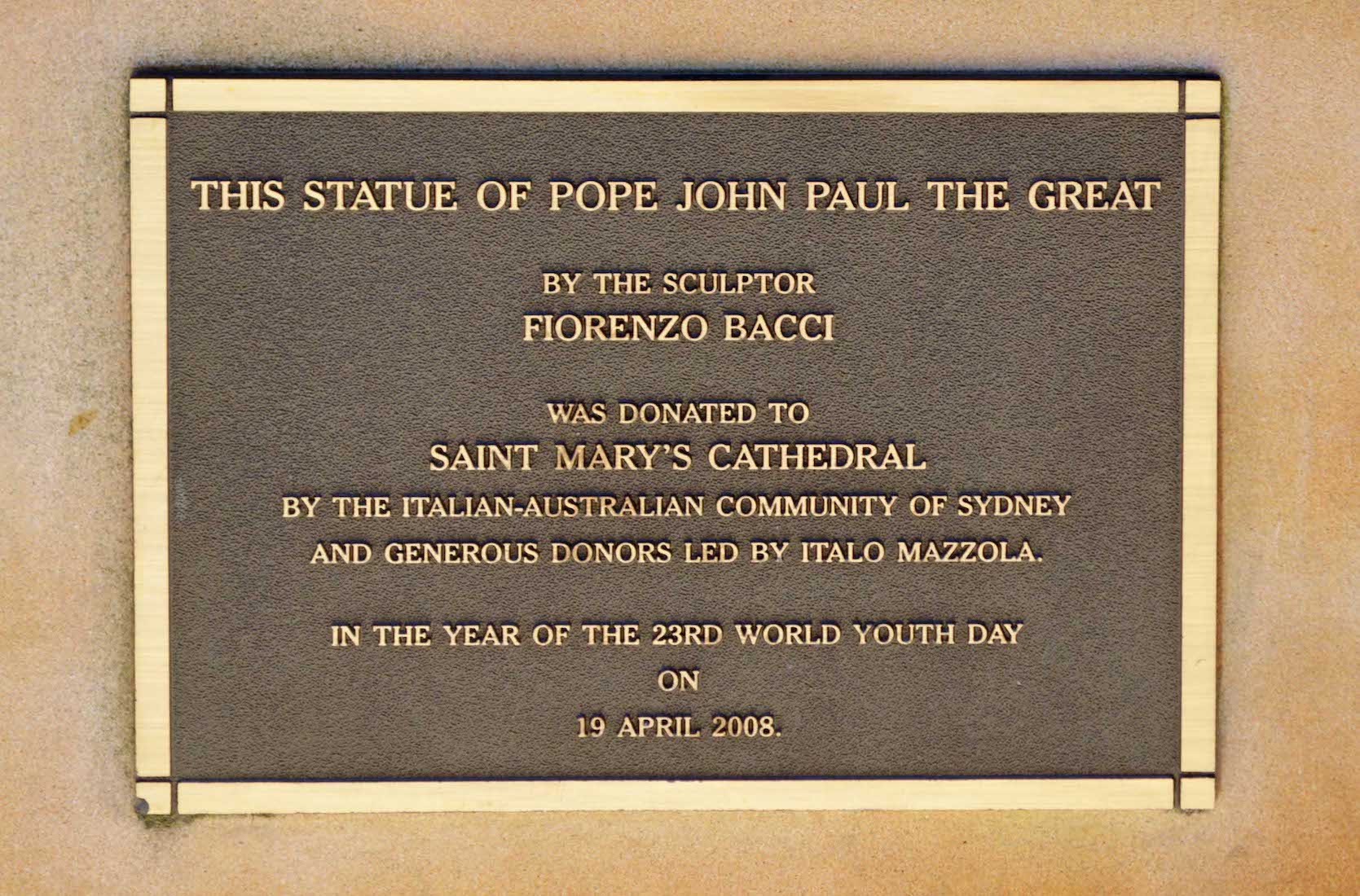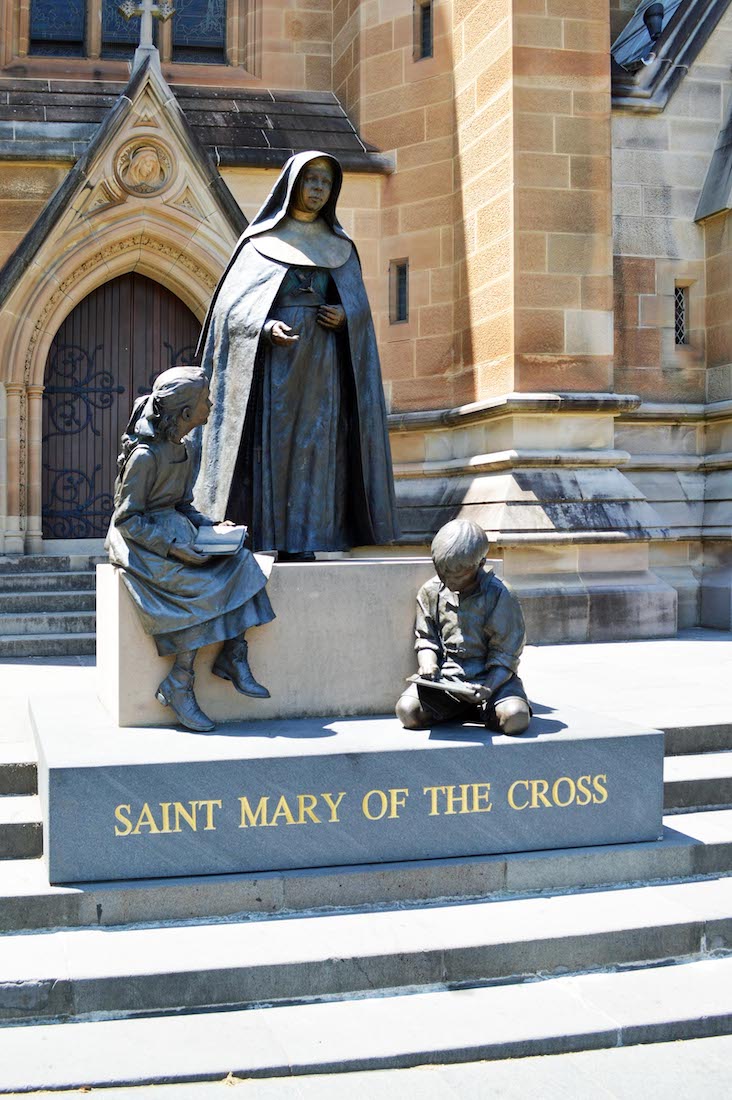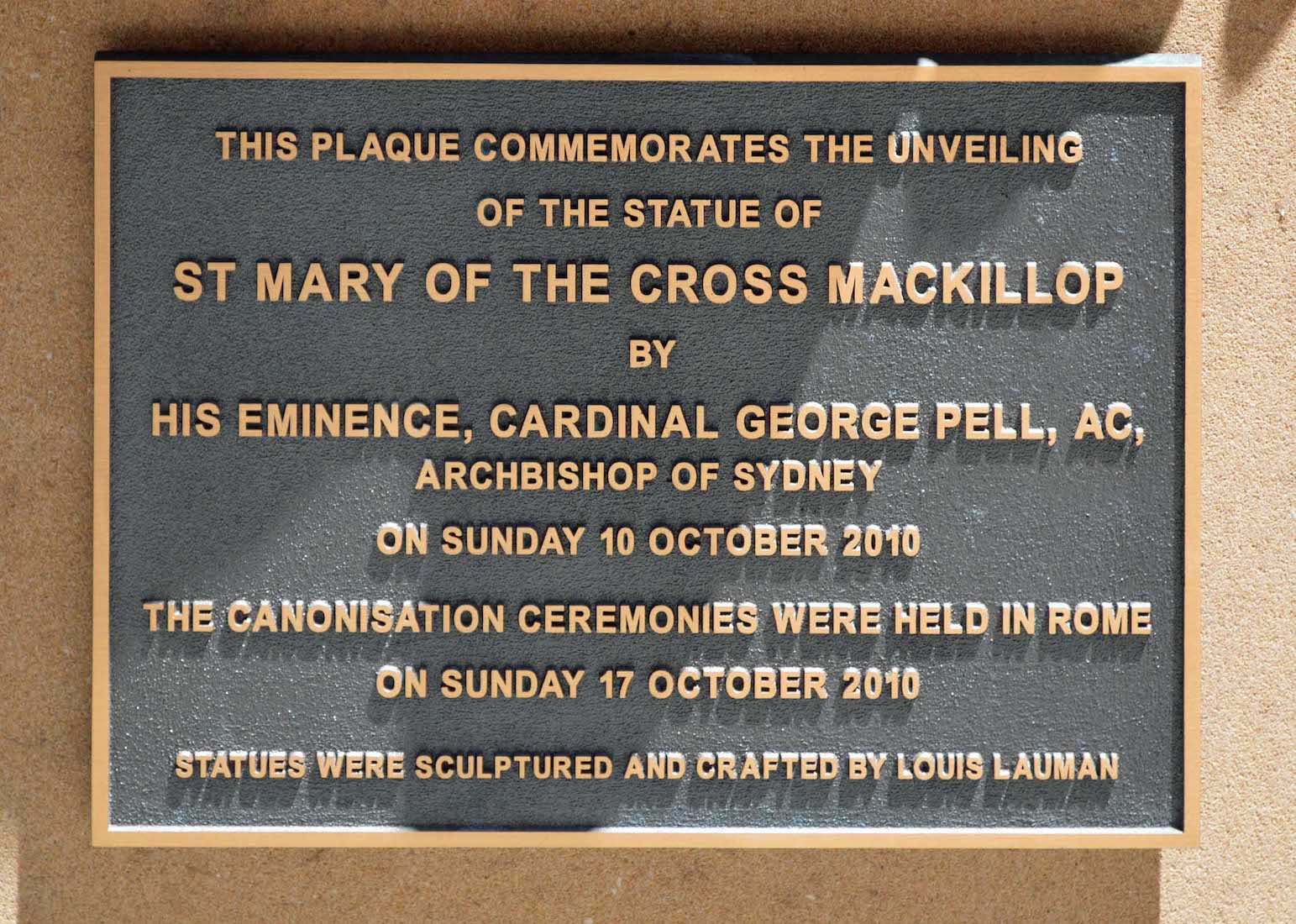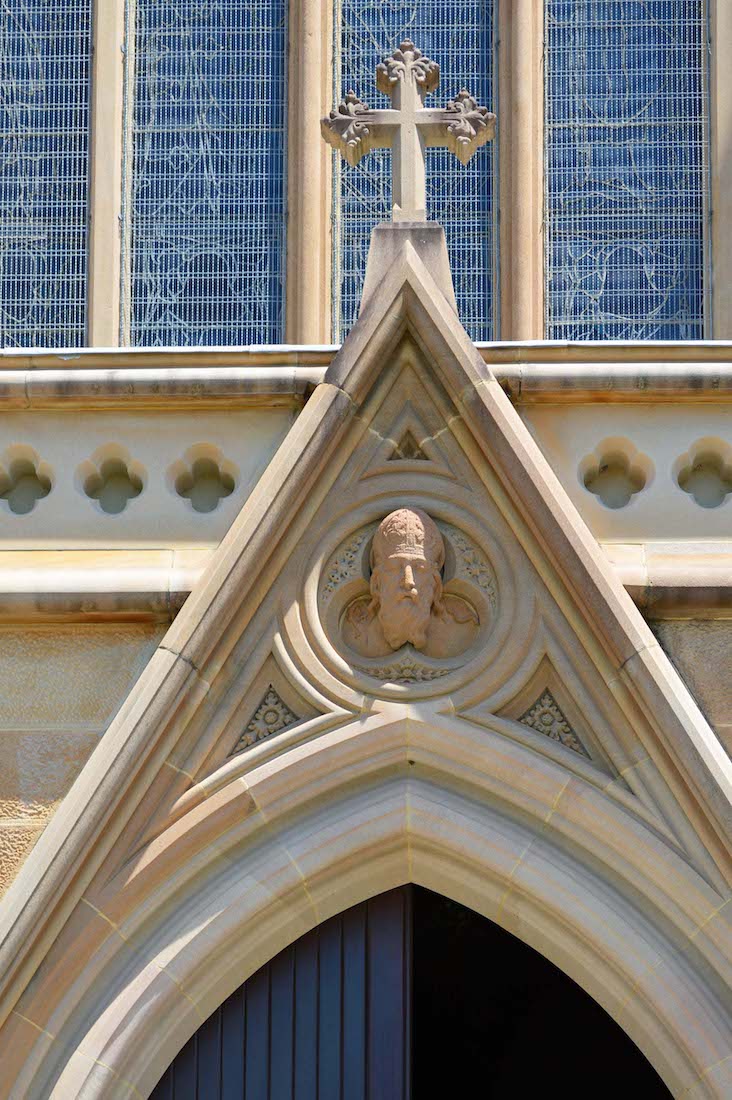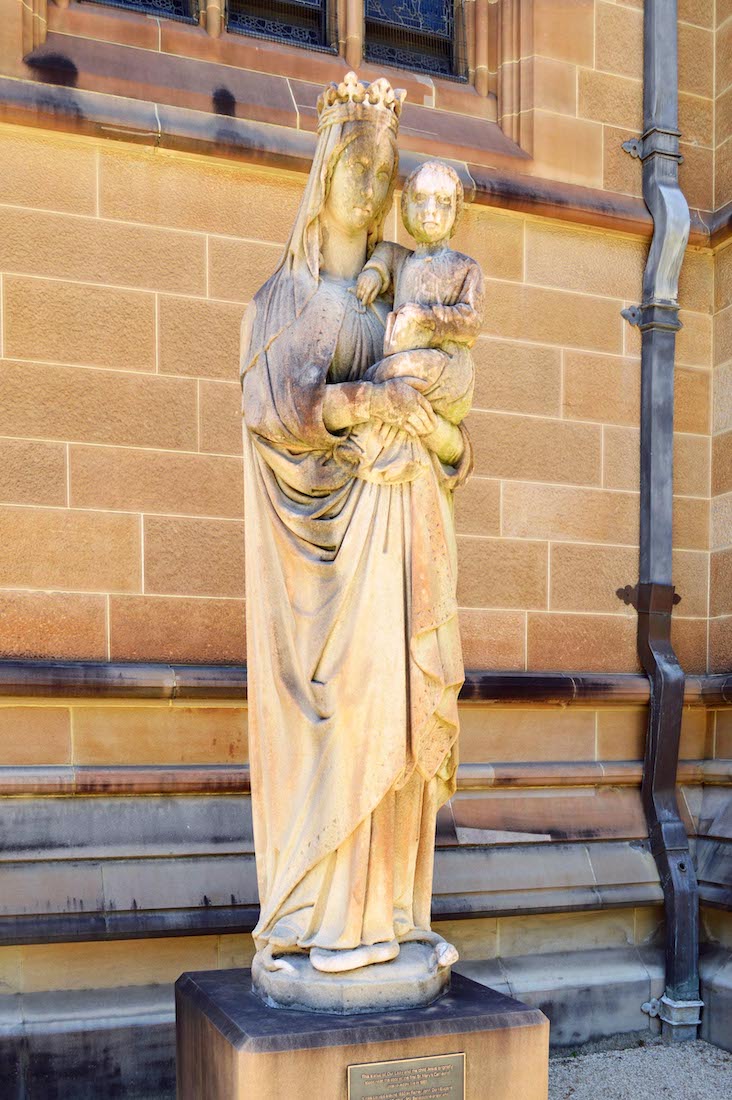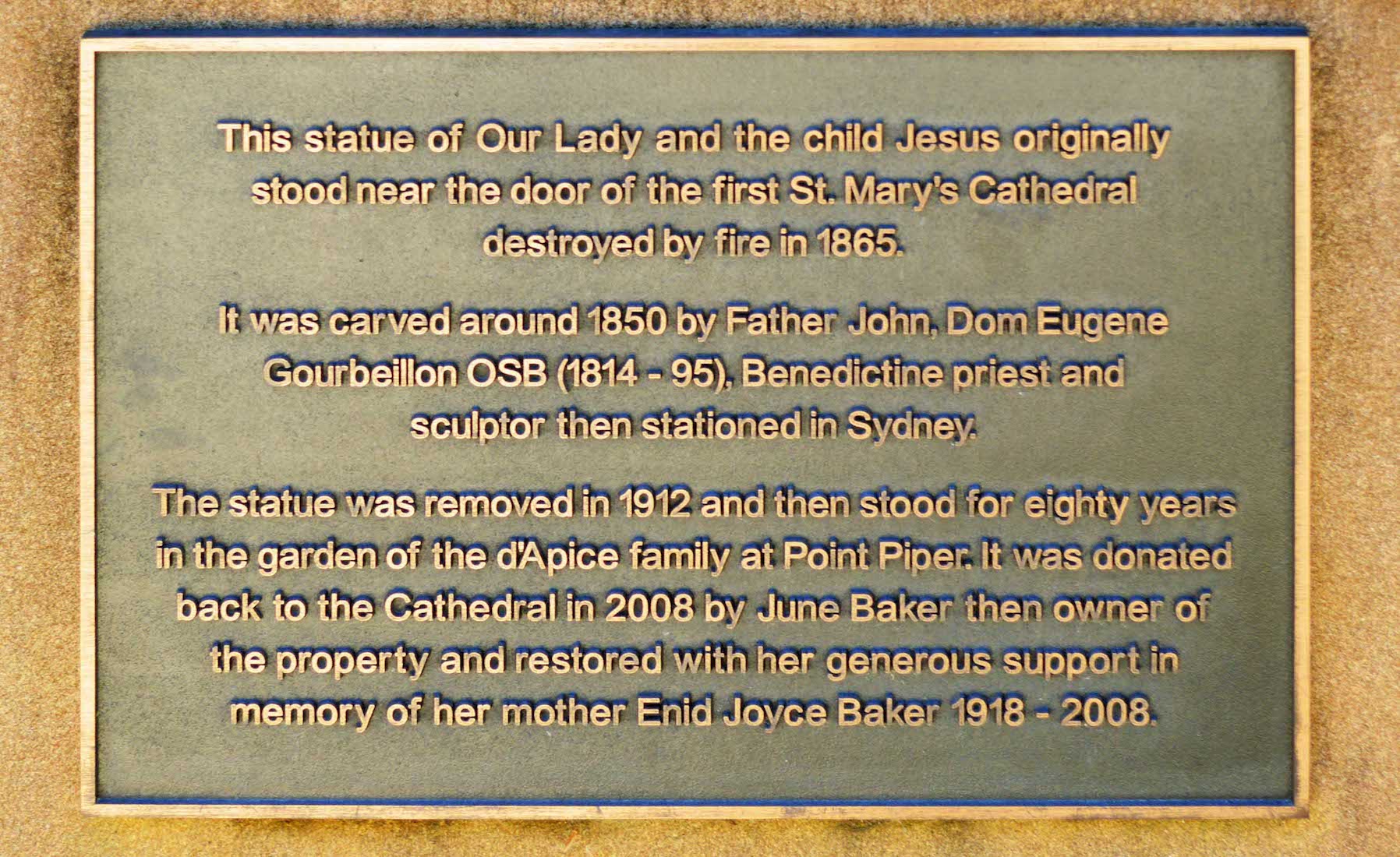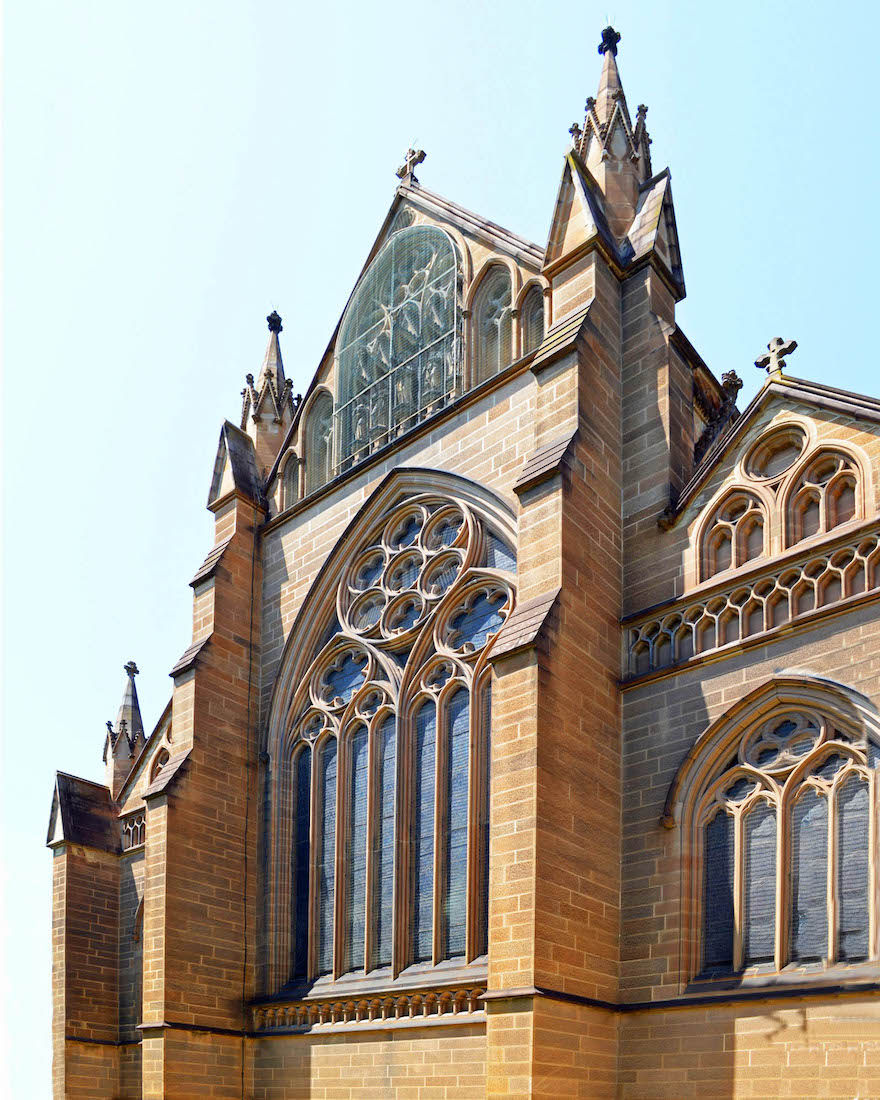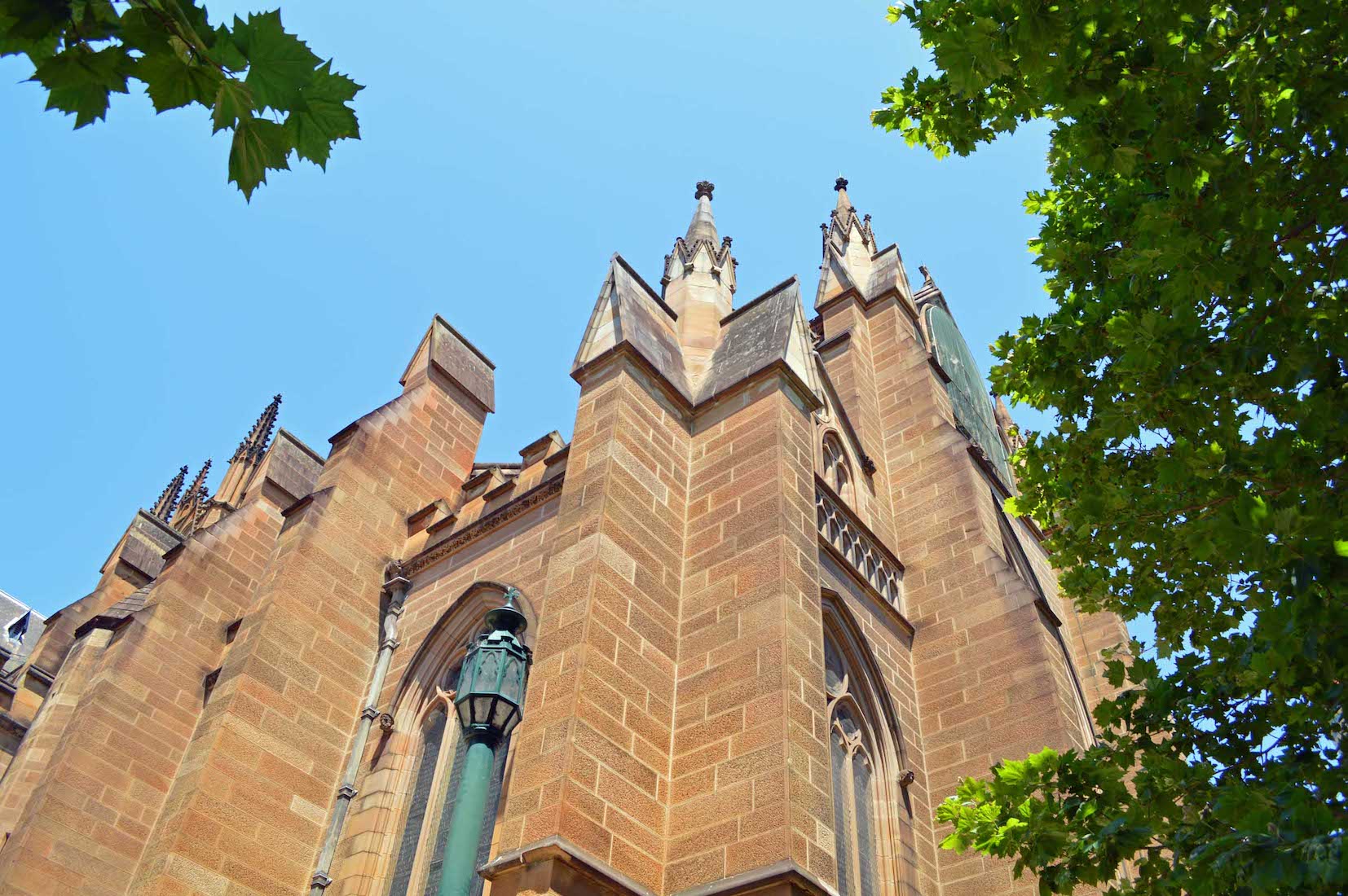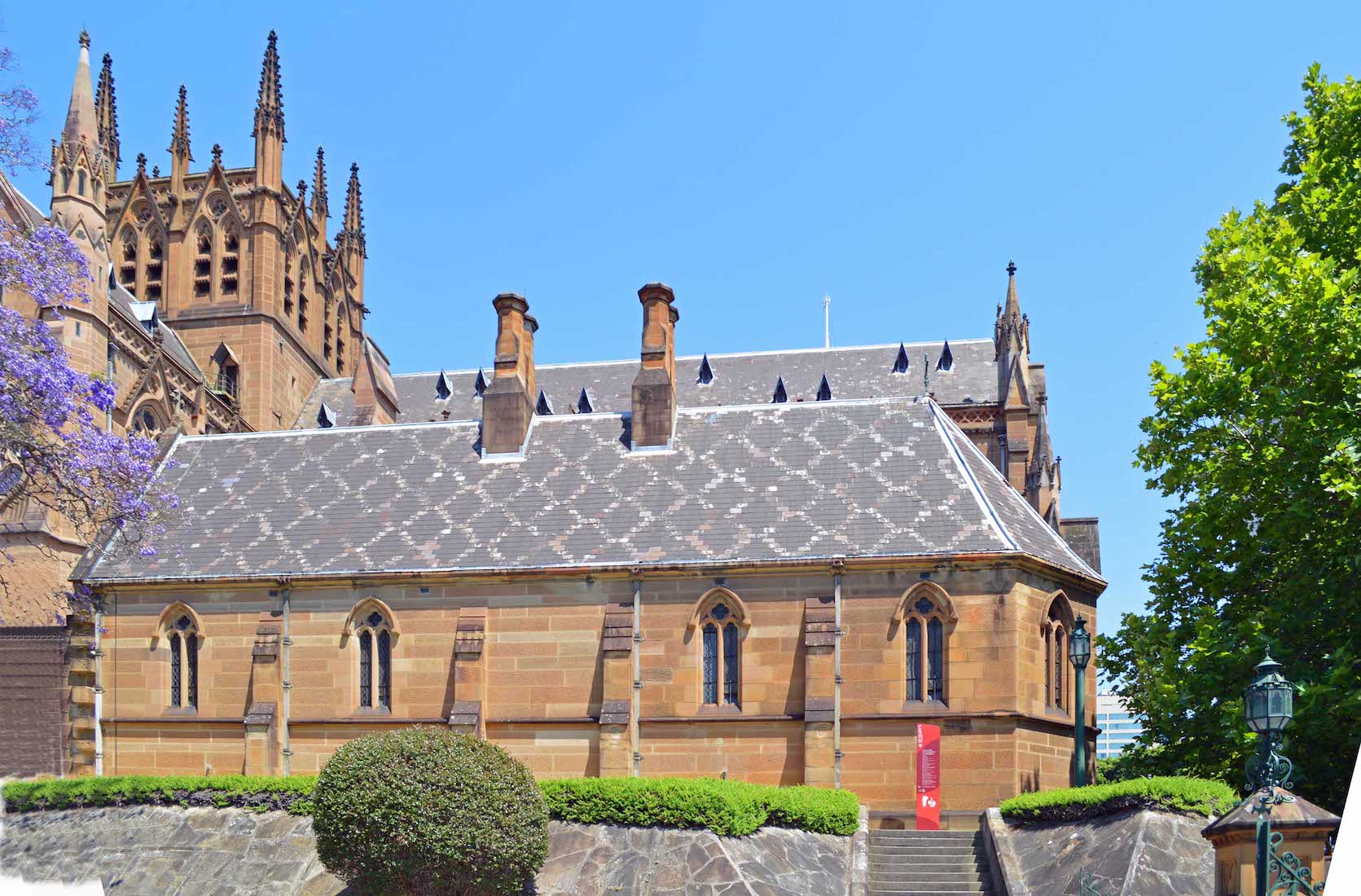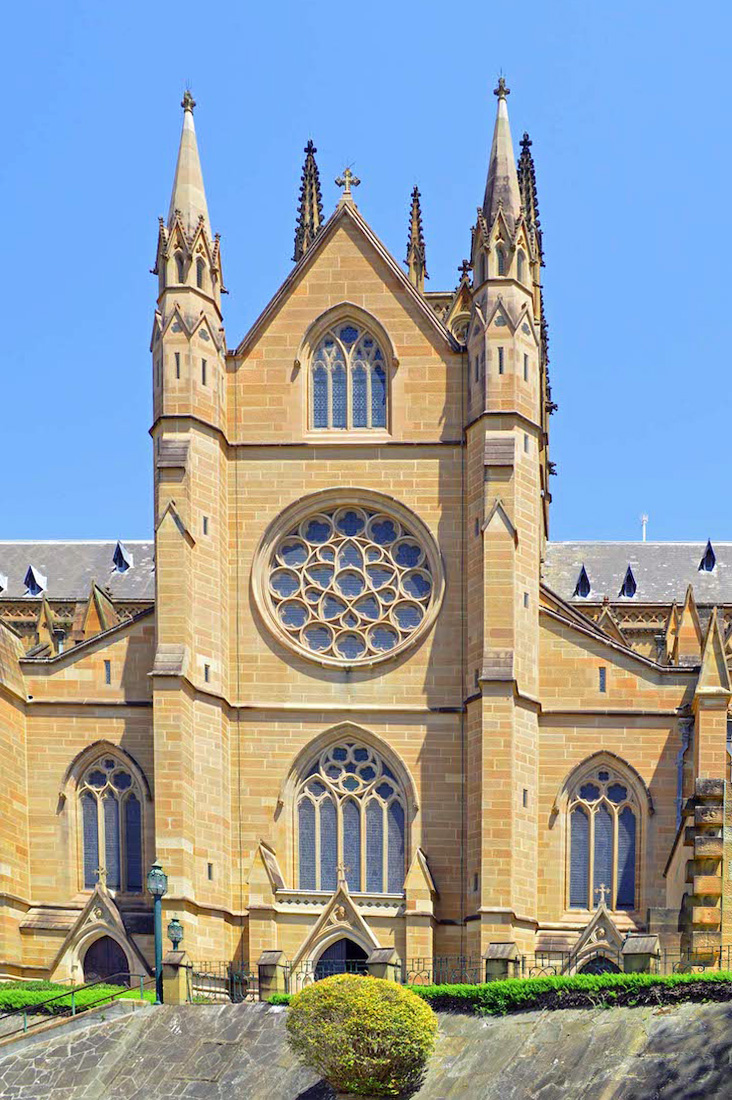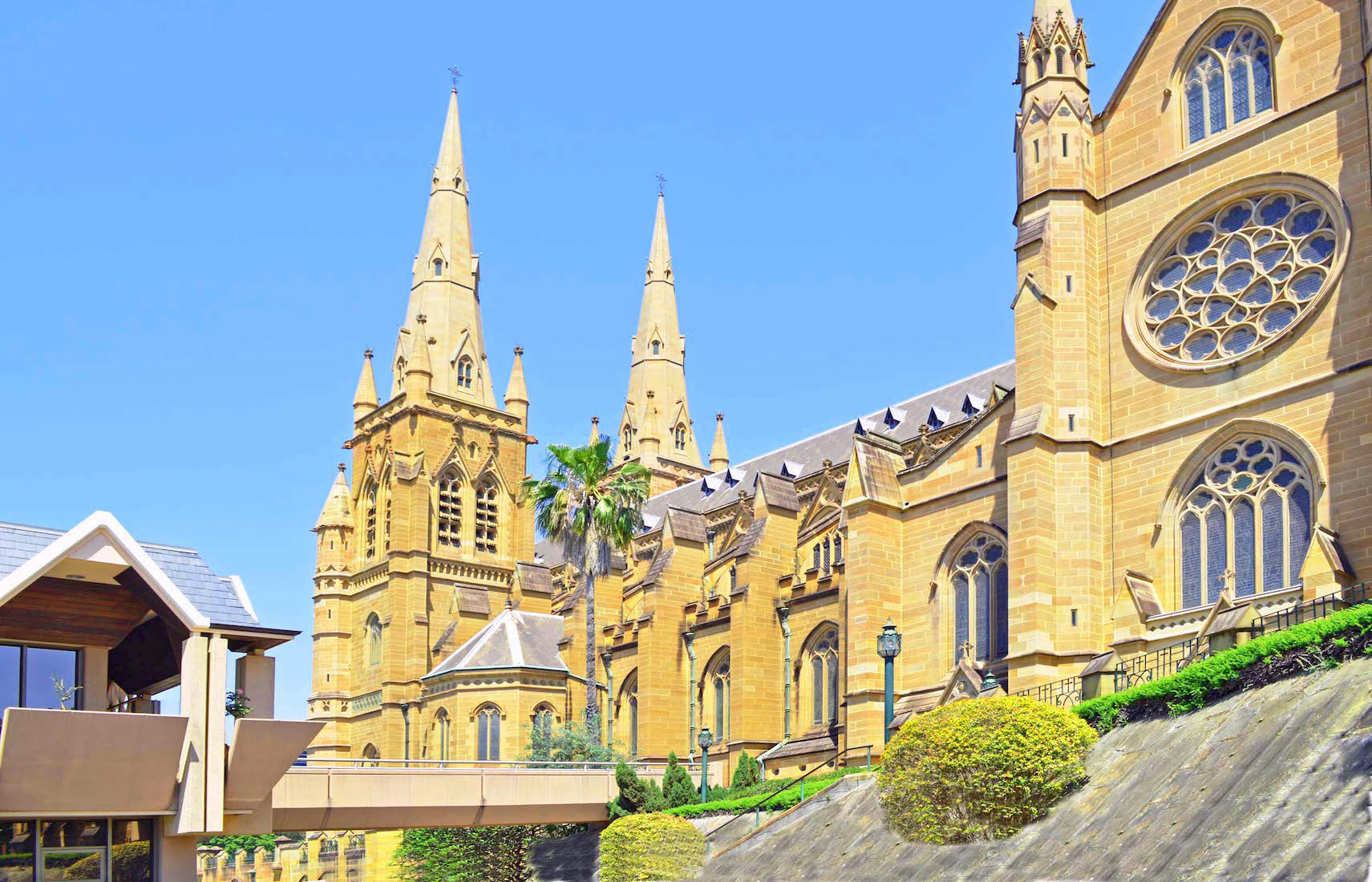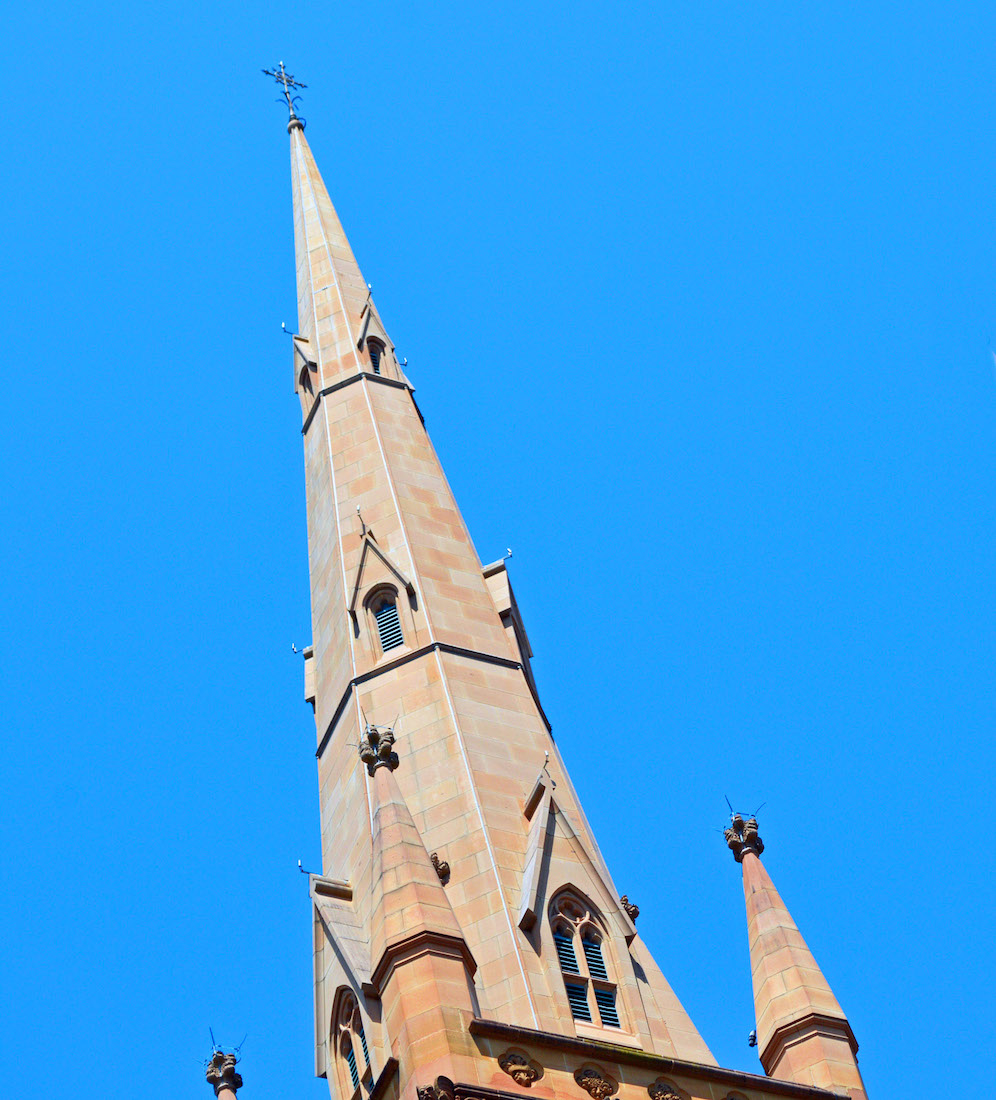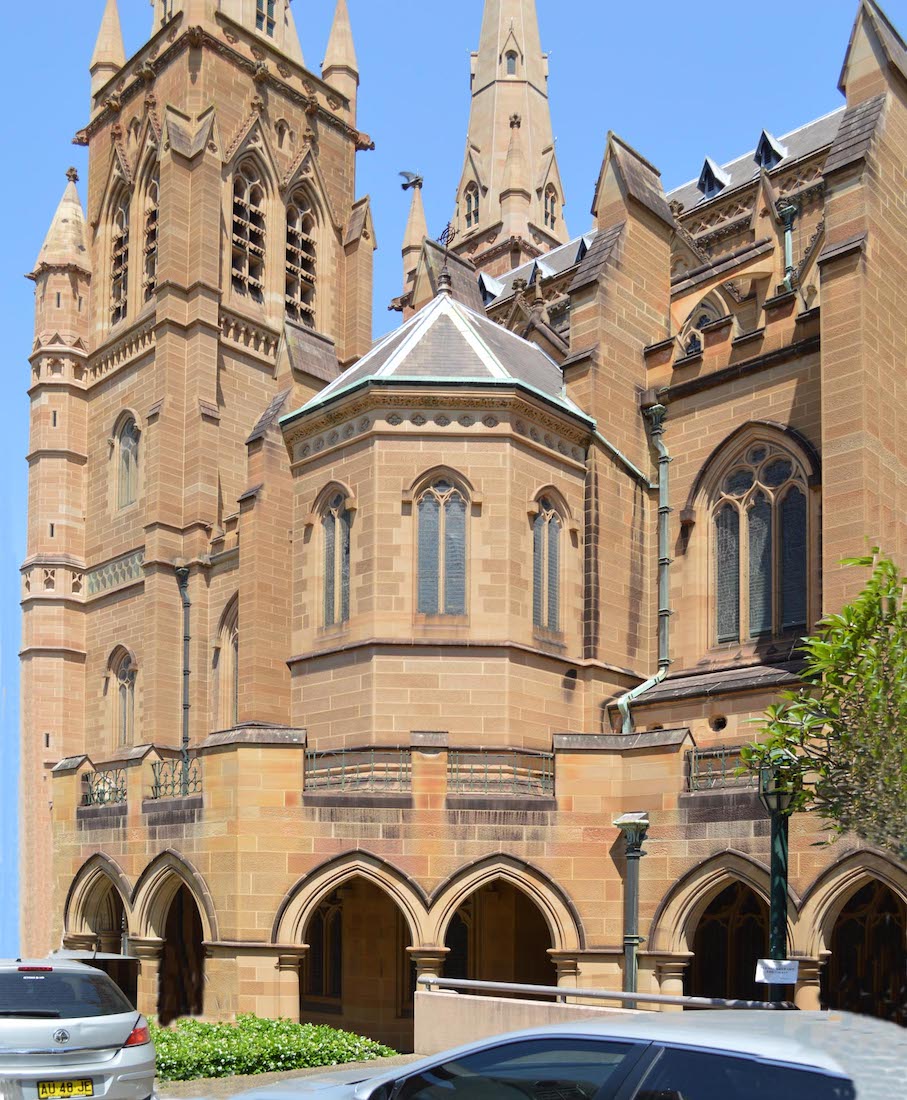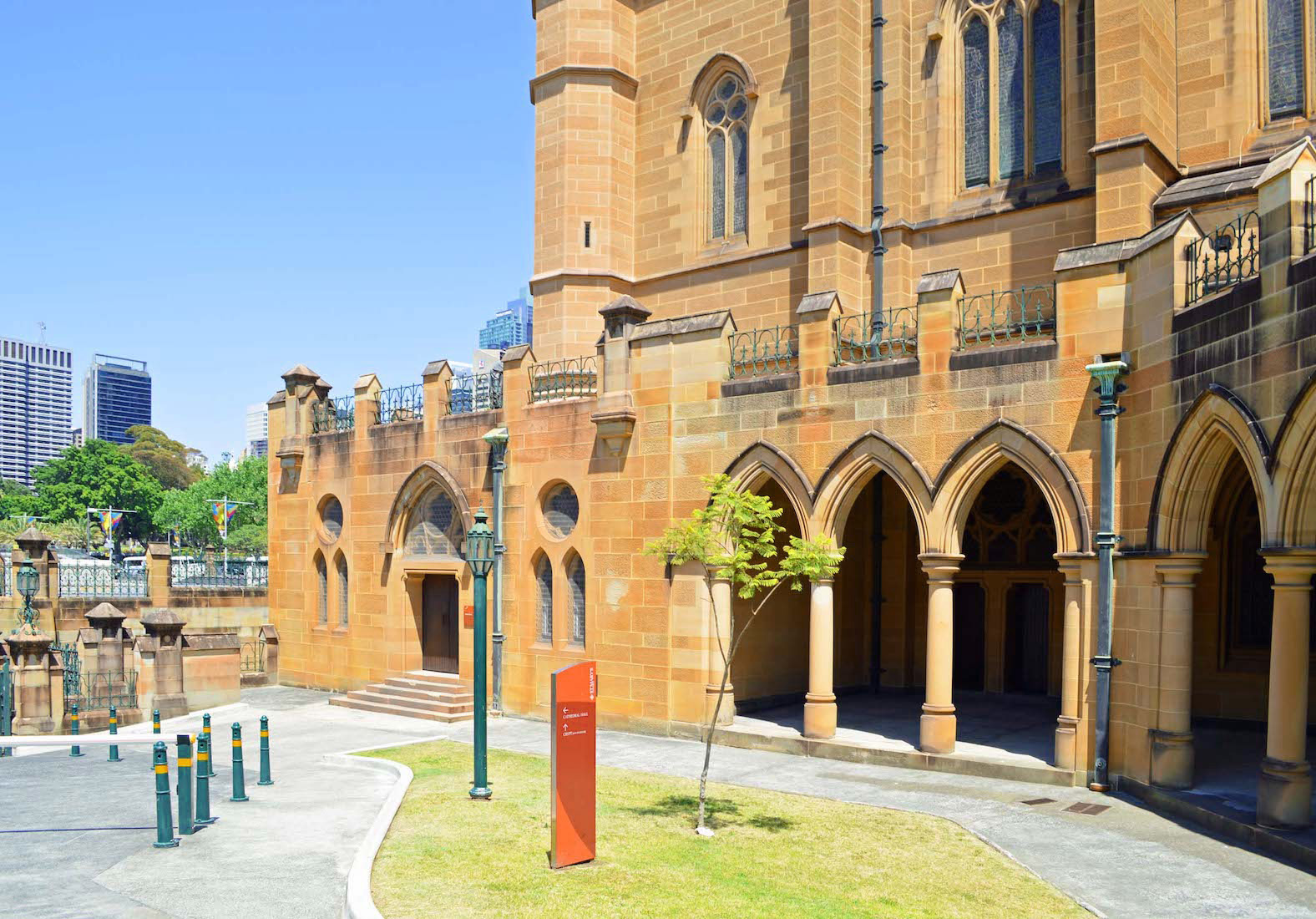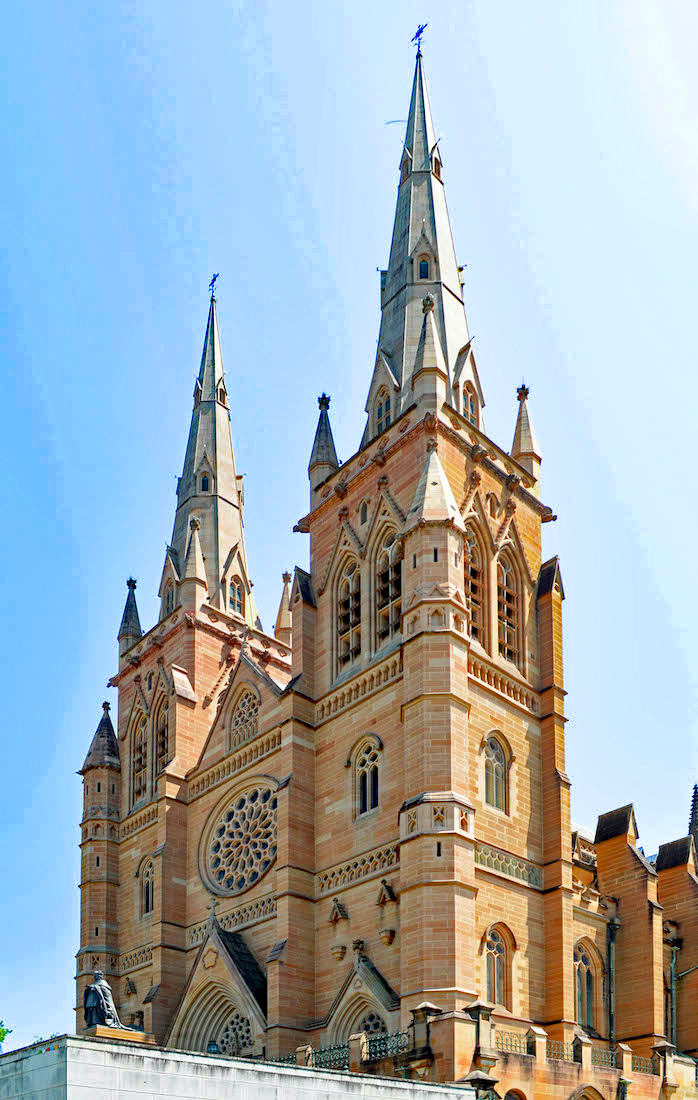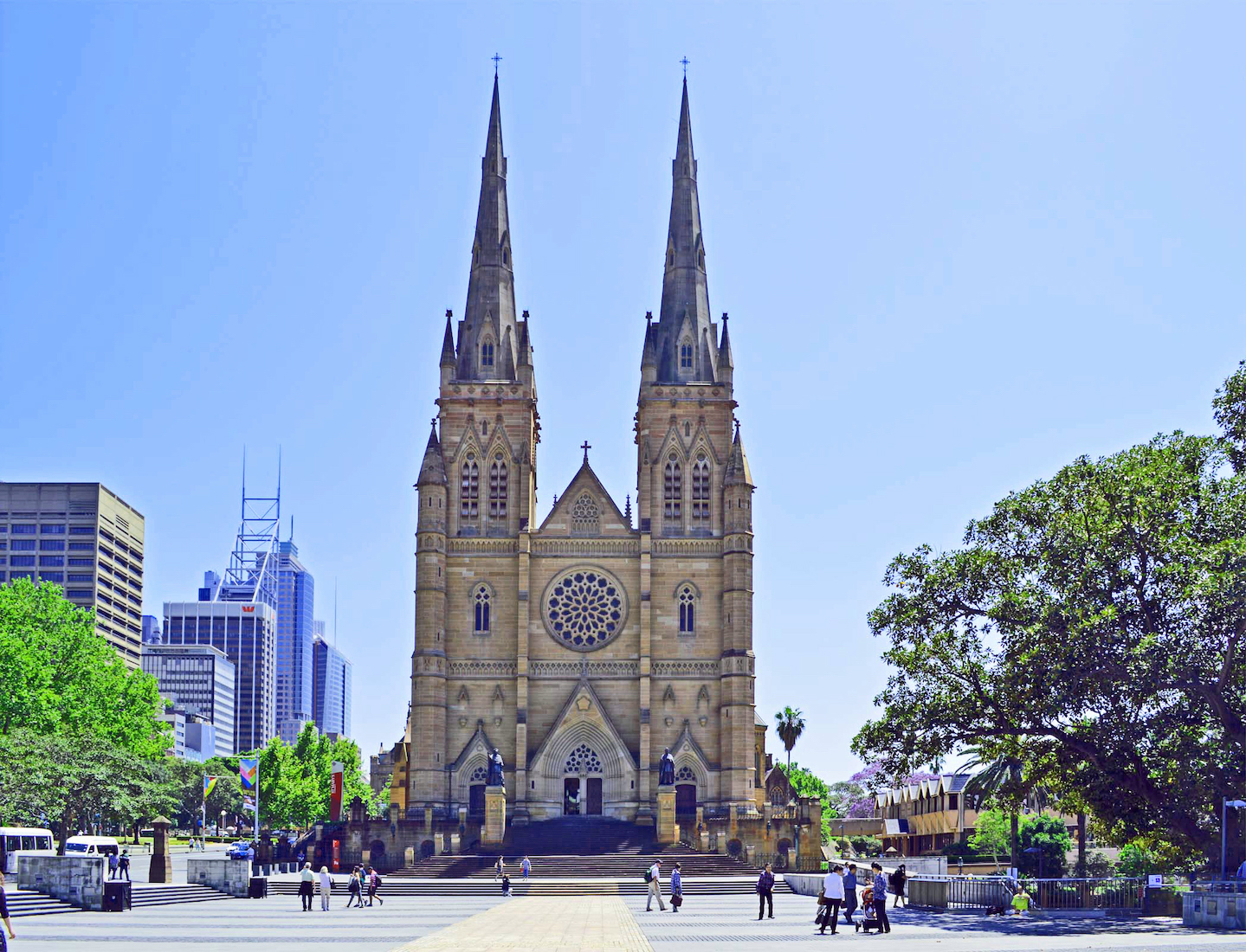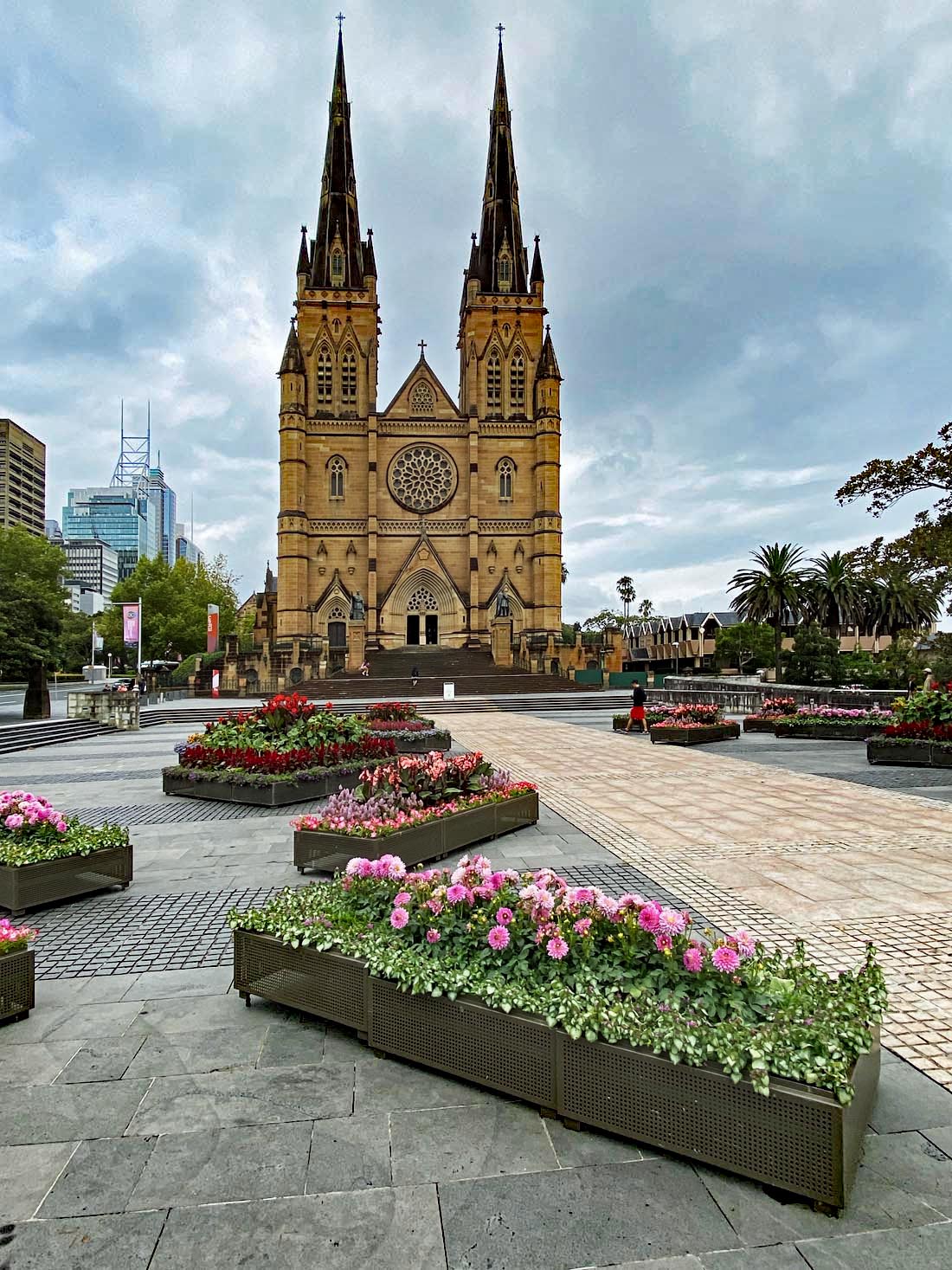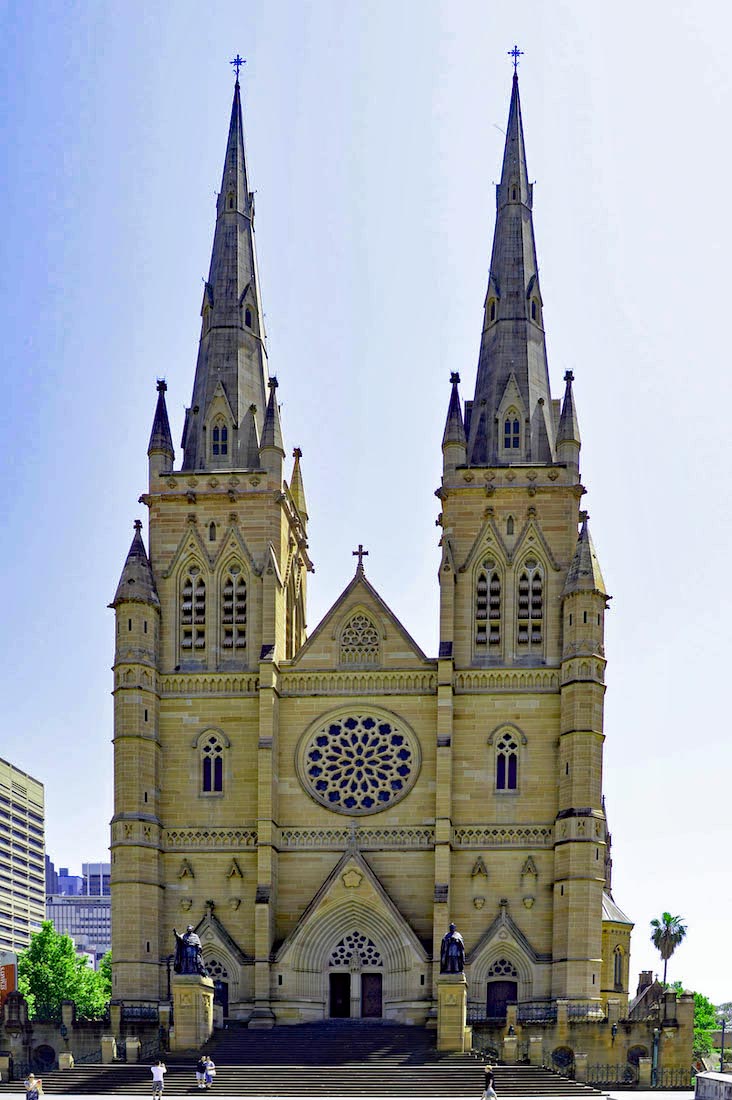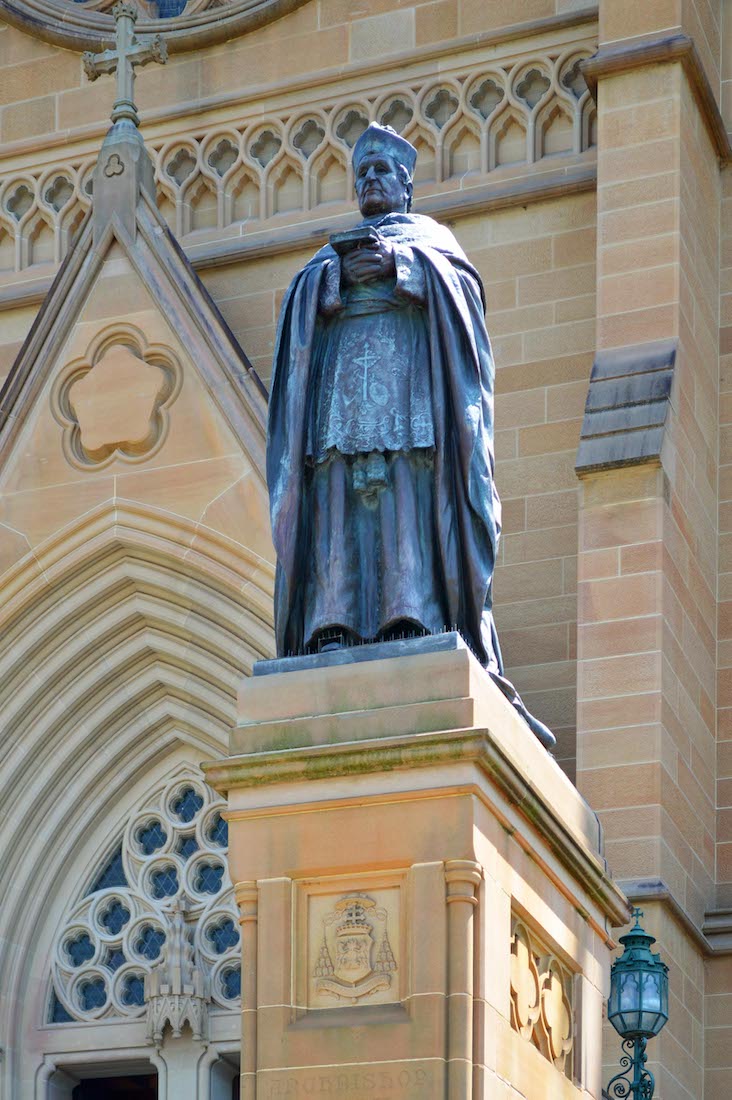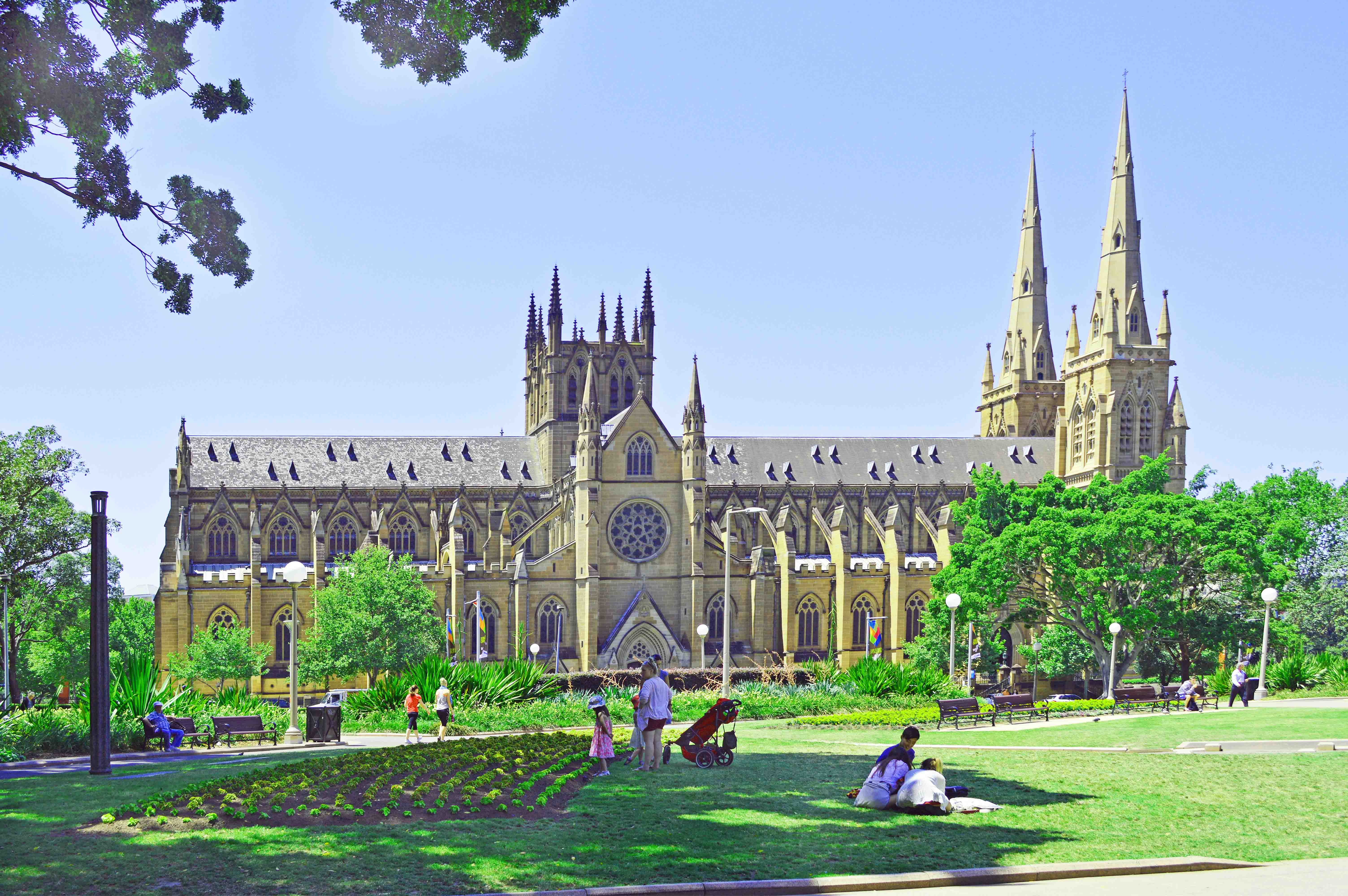
The Metropolitan Cathedral of St Mary is the cathedral church of the Roman Catholic Archdiocese of Sydney and the seat of the Archbishop of Sydney. It has the greatest length of any church in Australia, although it is neither the tallest nor the largest overall. We notice the cruciform shape of the Cathedral, and the two Western towers. St Mary’s is linked to an administration block to the South. The Cathedral is placed with its (liturgical) East window facing almost due north. As mentioned in the Index, we shall use liturgical directions (with capital letters). PLAN
2. NORTH WALL, NORTH DOOR
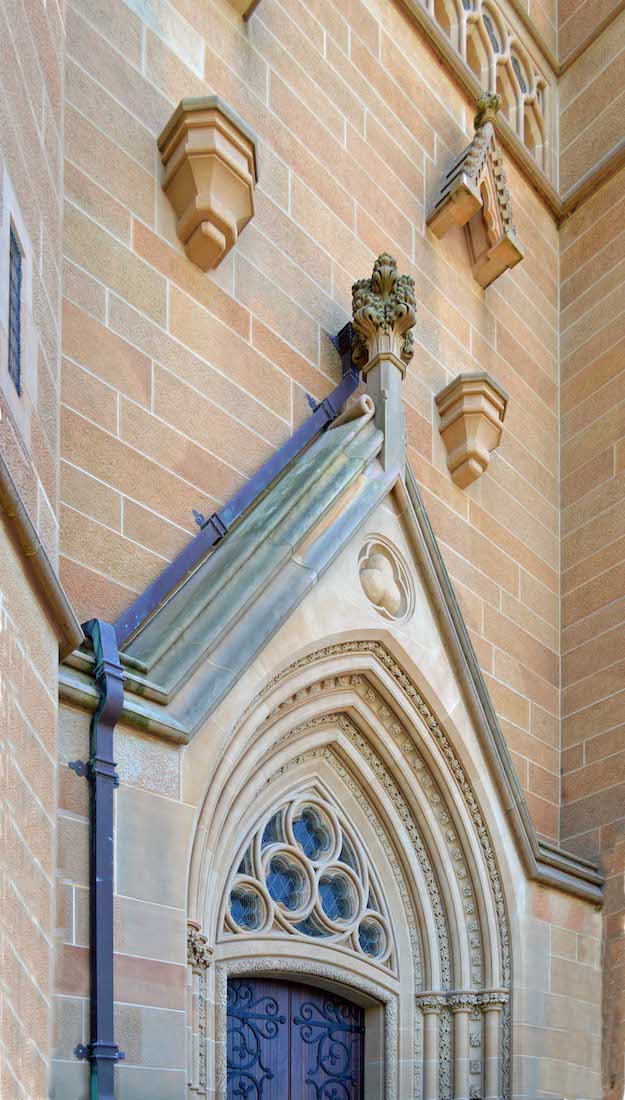
We shall walk around St Mary’s, beginning at the North West spire. The West facing entry below the spire demonstrates some of the fine decorative stone-work we shall encounter here.
3. NORTHWEST SPIRE
The spires blend in perfectly with the rest of the Cathedral, but in fact they were only added recently. In the year 2000 the Government made a grant to mark the new millenium, and the spires were completed. Standing at 74.6 metres (245 ft), they make St Mary’s the fourth tallest church in Australia, after St Patrick’s Cathedral (Melbourne), St Paul’s Cathedral (Melbourne) and Sacred Heart Cathedral (Bendigo).
4. POPE JOHN PAUL
This beautiful bronze statue stands on a concrete base, and is about two thirds life size. The Pope holds a branch in his left hand and has his right raised up in a welcoming gesture. He is wearing his papal robes and a mitre. The statue was sculpted by Italian sculptor Fiorenzo Bacci. It was donated to St. Mary's Cathedral through the efforts of the Italian-Australian community of Sydney. The sculpture was unveiled April 19, 2008. The statue is located facing Hyde Park, and near the West end of the Cathedral.
5. ST MARY OF THE CROSS
This sculpture comprises three larger than life sized bronze statues. Along with Mary are the statues of two children. Mary is standing and is wearing her habit. The children are seated and holding books. The statue was unveiled on October 10, 2010 – one week prior to Mary’s canonization in Rome on October 17, 2010. The statues were sculpted and created by Louis Lauman. This sculpture faces Hyde Park, and is sited just East of the North transept.
6. DOOR DETAIL
There is a small doorway on either side of the North transept. Each has a nicely decorated gable topped by a budded cross.
7. OUR LADY WITH CHILD JESUS
At the East end of the North wall stands this statue of Our Lady and the child Jesus. The statue originally stood near the door of the first St Mary’s Cathedral which was destroyed by fire in 1865. It was removed in 1912, and then stood for 80 years in the garden of the d’Apice family. It was donated back to the Cathedral in 2008 and restored. The statue was carved around 1850 by Father John Dom Eugene Gourbellion OSB (1814 – 1895). He was a Benedictine priest and sculptor who was then stationed in Sydney.
8. NORTHEAST VIEW
In our walk around the Cathedral we have reached the North East corner. Looking back along the North wall, the statue of Our Lady is dwarfed by the high walls and solid buttresses. The central tower houses the Cathedral bells – a ring of twelve bells, plus two additional bells. They were rung for the first time in 1986. The cathedral is constructed of dressed Sydney sandstone.
9. EAST WALL
To our left is the East wall with its large stained glass window. The high gable running the length of the cathedral covers the sanctuary and nave, and is flanked on either side by sloping roofs covering the aisles.
10. SOUTHEAST CORNER
The South East corner ... . ‘A rock pile ceases to be a rock pile the moment a single man contemplates it, bearing within him the image of a cathedral.’ – Antoine de Saint Exupéry.
11. SOUTH VIEW
The view of the Cathedral from the North East is obscured by an adjacent structure with a decorated slate roof and four central chimneys. Perhaps the first St Mary’s School? In the gable roof of the Cathedral beyond, we notice the many little dormer vents – a French style. At left is the crossing tower, which holds the bells. This tower is quite stocky but its silhouette is made elegant by the provision of tall crocketted pinnacles.
12. SOUTH TRANSEPT
The ground slopes away on the South side of the Cathedral, so we are viewing the Cathedral from below. The Southern transept stands out.
13. SOUTH WALL
Looking towards the South West tower, we notice the bridge at Cathedral ground level crossing over to the administration block.
14. SOUTHWEST SPIRE
This Southern Tower contains a single bell,the Angelus Bell, which is one of the original bells of the 1882 peal. It is still rung everyday at 12 noon for the Angelus prayer and devotion.
15. SOUTHWEST CORNER WITH BAPTISTRY
Tucked away in the South West corner is this delightful octagonal chapel. At this corner, the lower ground level is evident with an extra row of supporting Gothic arches.
16. ROUND THE CORNER
We continue our circuit of the Cathedral, round the South West corner ...
17. SOUTHWEST VIEW
From here we catch our first sight of the grand West wall. Despite the many English features of the architecture the entrance façade is not English at all. It is a design loosely based on the most famous of all Gothic west fronts, that of Notre Dame de Paris with its balance of vertical and horizontal features, its three huge portals and its central rose window.
18. WEST FACE – DISTANT VIEW
The originally designed French façade was intended to have twin stone spires like those of Lichfield Cathedral, but they were not to be put in place until 132 years after the building was commenced. St Mary’s Cathedral has the open space of Hyde Park on the North side. But as well, there is a large, open, mostly paved space leading to the West wall, known as Cathedral Square. Approaching from this side reveals a totally different aspect of the Cathedral.
19. WEST FACE
The great rose window is a central feature of the West wall. Created in the 19th Century over a period of 50 years the 40 magnificent stained glass windows are frequently described as ‘the glory of St Mary's Cathedral’. Many are the work of British master artisan, John Hardman. These windows are internationally recognised for their beauty as well as their outstanding quality and design.
20. WEST STATUES
The North guardian of the West door (left) is Patrick Francis Moran (1830 – 1911) who was the third RC Archbishop of Sydney (1864 – 1911) and the first Australian Cardinal. During his time in office he ordained nearly 500 priests, dedicated more than 5000 churches and professed more than 500 nuns. •• On the Southern side (right) stands Michael Kelly (1850 – 1940), fourth RC Archbishop of Sydney (1911 – 1940). The main legacy of his ministry was fund-raising for schools: it is estimated that during his time in Australia £12,000,000 was spent on scholastic and church properties.




